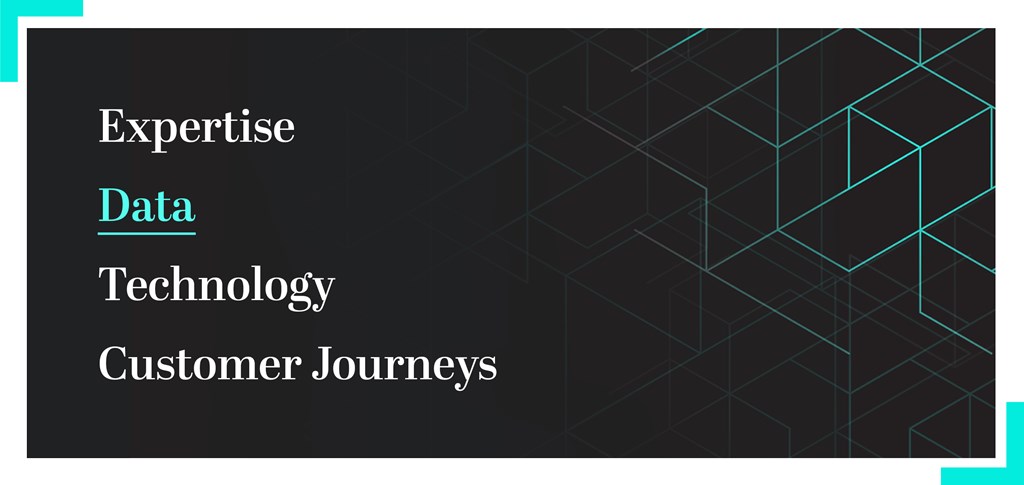The Importance of Data
Justin Masters

There’s been a little hiatus and unexpected gap between my first article and this next one. Nothing dramatic, just the constantly changing environment in which we all operate these days though I’ve been using the time wisely, at least from my perspective, to further develop my insights in being data driven, talking to colleagues and speaking with others in the industry. So here goes, back into it.
The state of data
We don’t need to establish whether data is important. This is a given and has been for a long time. It’s firmly understood that data, the right data, can provide a clear view of the past that we can identify learnings from and, in some ways, predict what might happen in the future. In this ever changing world that we are living in, data is becoming, or maybe has already become, even more important to help us learn even faster about what is working and, equally as important, what isn’t.
In a 2021 report, “Fuelling growth in an age of data” by AND Digital, it was no surprise to see that around three quarters of respondents reported data as understood to be important to their organisations. It was though, at least to me, a surprise to see that over three quarters of the participating organisations identified as having a data strategy in place.
Based more on anecdotal evidence than actual data (a certain irony in this context I admit), I hold the opinion that this is perhaps a skewed view that’s highly contextual and dependent on what the respondents mean by a data strategy being in place. My own view, perhaps controversially, is that a number of those indicating that they have a data strategy in place perhaps don’t really understand the real data opportunity, or the potential of what they could achieve with data.
This is, in part at least, backed up by our own research we conducted in partnership with Optimizely and Siteimprove, “From Digital Transformation to Digital Evolution: Survival of the Quickest”. One of the biggest technology issues identified within the report is having a ‘single source of truth’ to support collaboration across departments and maintain a consistent, coherent customer journey. A quarter of digital leaders (organisations that regard themselves as ‘very successful’ in their digital initiatives) and almost half of mainstream businesses don’t have such a unifying data repository.
Organisations have so much data available to them, often not even by design, however they often fail to recognise the value in what they have. One of the main problems is that it typically resides in silos, often hidden away, not in the right format to be able to be extracted and analysed, and therefore interpret from the data what might be .
Frequently, when we audit an organisation’s data, we see large volumes of transactional data; the data recording the interactions customers have had with the organisation. There is a large gap, or total void, of behavioural data; how customers, members or prospects are interacting with organisations on a regular non-transactional basis. Behavioural data is where we can understand, or interpret, intent and take actions to help or guide on a journey. Or maybe just to understand where, how, and why, people are interacting with an organisation. This is where I feel there’s perhaps the biggest missed opportunity to learn and adapt both organisations and experiences.
Rather than just thinking about the end transactional goal, if we were to think more about capturing the data associated with interactions, we could take insights from this and use this to inform targeted campaigns or understand the topics of interest linked with buying behaviours to drive content strategy and creation. Data such as geographical location, time of day, what data a user is inputting in to a calculator or quote engine, within GDPR compliance of course. All of this data can be put together to understand regional or perhaps demographic variances.
There is also often a heavy reliance on IT or development resource to get at the data. Less often is there a data team in the organisation with data skills and the experience to extract the data and, more importantly, analyse and interpret the data into meaningful insights and measures.
I think, for many organisations, there is a desire there. However, often data is just seen as too hard, a step too far and something to tackle next year. This means we’re missing out on data opportunities to drive growth, it’s also creating missed revenue and limiting the ability to create real-time dynamic segments that are the foundations of advanced personalisation and loyalty within digital experiences.
Turning data into outcomes
Capturing and analysing data is, ultimately, all about driving improved outcomes for organisations. Whether that’s efficiency, improved revenue, identifying trends to spot new market opportunities, or simply to know that what you’re doing is working, they are all about improving the outcome.
If we can get the right data strategy in place, one that enables the unification of both transactional and behavioural data, firstly we are able to start to get a genuine, real view of the customer or prospect. Secondly, we’re then in a position to begin to mine the data, analyse it, spot trends and most importantly, derive insights that start to drive organisational change.
Not only will organisation change be a positive outcome, on a more practical level, better and more unified data creates the opportunity for improved real-time segmentation of customers and prospects. Data, captured correctly, can enable more targeted real-time segments which in turn allows for more specific trigger based activities, to drive outcomes. More advanced personalisation effectively, across any digital channel enhancing the customer experience significantly and putting it on a par with that experienced on Amazon or Facebook. Whatever your personal view of Amazon or indeed Facebook, they put personalisation at the forefront of their strategy early on and knew that customer data, transactional as well as non-transactional, was key.
Jeff Bezos said "If we want to have 20 million customers, then we want to have 20 million stores” whilst placing the customer experience at the core of one of their four key principles, “Our mission is to be the earth's most customer-centric company".
By placing data and experimentation, with experimentation itself leading to more data, at the core, Amazon have been able to deliver an incredible level of personalisation. Without data, they would never have been able to succeed in delivering the outcomes they desired. You only have to look at the categories of data they hold about you, as an individual, to understand just how they may use that data to drive your experience. If you’ve not yet done it, request from Amazon all the data they hold about . I’m not sure if it’s a genuinely sound data strategy or a bit scary.
"Without data, you’re just another person with an opinion"
W. Edwards Deming
Beyond the experience driver, the insights that can be gained from data allow us to experiment and optimise more efficiently, highlighting opportunities for improvement and providing the confidence to try something new or different based on hypotheses formed from the data. These experiments provide the ability to start to measure what actually matters to provide the best insights; why did a trend happen, what was the outcome of making a small hypothesised optimisation. These are the insights which ultimately can drive the outcomes that you’re trying to achieve in terms of better conversion. Whether that’s simply a document download, increasing revenue or conversion through digital channels, or just being able to better inform product (digital or not) strategy. The key here is that data allows us to gain real insight and, as Deming said, without the data, you’ve just got opinions.
What does being data driven organisation look like?
With this all in mind, what is it that, as an organisation, being data driven starts to actually look like? For me, the oft used phrase of “data driven digital transformation” is simply the use of digital technology to find better, quicker ways to solve problems with data. Putting data at the core and using the information and skills you have at the heart of a programme of work, and building outwards with the right technology and data strategy to deliver insights at speed. This is what being data driven is for me. Using data to power organisational growth and change.
It's not all about the magic of AI and machine learning, though, don’t get me wrong, used in the right places this can help find connections and trends in the data that human data analysts may not even know to look for.
There was a time, not that long ago, where the notion of storing data being too costly existed. It’s fair to say that this has now long gone. As an organisation, perhaps your next step is just planning a data strategy or simply running a data audit and gap analysis.
In all of this, it’s fundamentally important to remember that identifying the business problems that data can help you solve is what being data driven is really about. It’s not actually about the data itself and therefore you shouldn’t just start with the data part. Once you know the business problem, or problems, that’s when you can explore the data that can help you to address it and start to think about what data is needed to measure the impact of change and how could we use data to predict the future impact.
An element of being data driven is also about the visualisations of the data, not the data itself, but the trends and analysis that data visualisation tools can rapidly provide today. This wasn’t available even just a short time ago. Though I think we also have to be careful not to go too far.
You can’t watch any sport these days without mass data analysis and overly animated visualisations being shown. To the general public, this is probably often overkill. Though sports has become so data driven nowadays just to find that small marginal gain. It’s staggering the data that’s captured within sport just to spot trends or even make adjustments in real-time. Formula 1 uses masses of data, captured in real-time to make split-second judgements on tactics and changes during a race. And then there’s the data and analysis used in football. I never quite understood the level of data and analysis that happens there until Marcela Bielsa’s infamous Spygate press conference where he detailed the level of data captured and analysed just for one game (if you don’t know what I’m talking about, Google it, it’s fascinating). This is what being a data driven organisation is about, using data from every angle to make even just a small improvement in outcome.
A report by Forrester stated that “between 60% and 73% of all data within an enterprise goes unused for analytics”. Out of context, this can be misinterpreted as too much data is captured that we just don’t need. In context, Forrester go on to say that this is “unacceptable in an age where deeper, actionable insights, especially about customers, are a competitive necessity”. Simply clarifying that unused data is a wasted opportunity in the world of trying to be data driven.
In the next article, we’ll start to break out from the narrative around what being data driven is and begin to look at how to use technology to drive smarter decisions, what a smart, data driven, customer journey may look like and the capabilities you need within your people.
We'd love to hear from you
Get in touch-
Transforming Metro Bank's digital customer experience
Metro Bank
We built the revamped website on the latest version of Optimizely (formerly Episerver), using our recognised Optimizely expertise in delivering complex integrated websites.
-
Creating rewarding and responsive experiences for Age UK
Age UK
Through a series of strategic engagements, we developed an iterative and cost-effective plan that would help the charity create a responsive site to support the increase in mobile visits, and rebuilt the code to facilitate it.
-
Data driven optimisation delivered through the power of Optimizely
Charles Russell Speechlys
Our thorough onboarding process interrogated the firm's business objectives, establishing a number of digital themes and initiatives which then informed a set of digital success measures.


